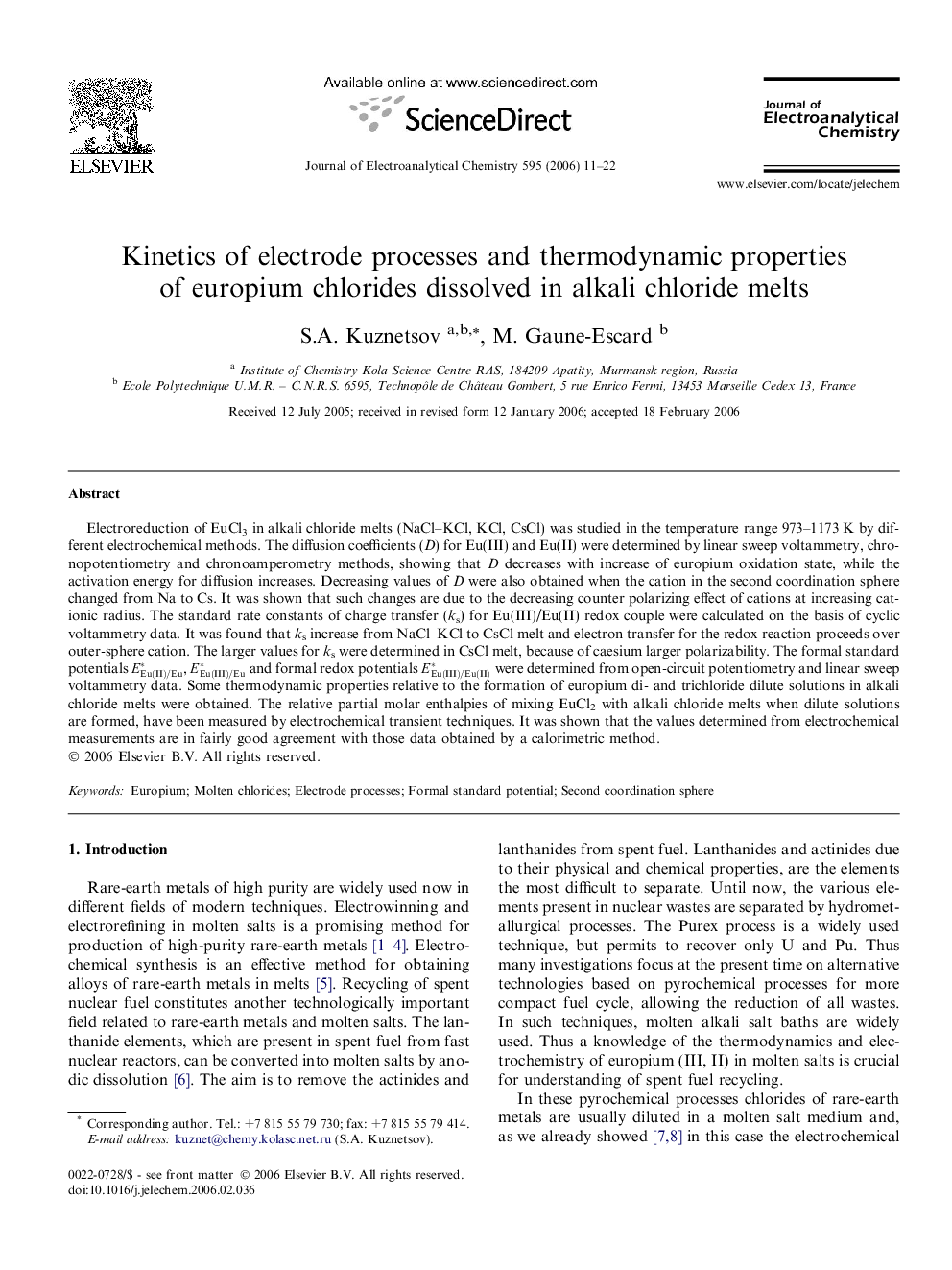| Article ID | Journal | Published Year | Pages | File Type |
|---|---|---|---|---|
| 221215 | Journal of Electroanalytical Chemistry | 2006 | 12 Pages |
Electroreduction of EuCl3 in alkali chloride melts (NaCl–KCl, KCl, CsCl) was studied in the temperature range 973–1173 K by different electrochemical methods. The diffusion coefficients (D) for Eu(III) and Eu(II) were determined by linear sweep voltammetry, chronopotentiometry and chronoamperometry methods, showing that D decreases with increase of europium oxidation state, while the activation energy for diffusion increases. Decreasing values of D were also obtained when the cation in the second coordination sphere changed from Na to Cs. It was shown that such changes are due to the decreasing counter polarizing effect of cations at increasing cationic radius. The standard rate constants of charge transfer (ks) for Eu(III)/Eu(II) redox couple were calculated on the basis of cyclic voltammetry data. It was found that ks increase from NaCl–KCl to CsCl melt and electron transfer for the redox reaction proceeds over outer-sphere cation. The larger values for ks were determined in CsCl melt, because of caesium larger polarizability. The formal standard potentials EEu(II)/Eu∗, EEu(III)/Eu∗ and formal redox potentials EEu(III)/Eu(II)∗ were determined from open-circuit potentiometry and linear sweep voltammetry data. Some thermodynamic properties relative to the formation of europium di- and trichloride dilute solutions in alkali chloride melts were obtained. The relative partial molar enthalpies of mixing EuCl2 with alkali chloride melts when dilute solutions are formed, have been measured by electrochemical transient techniques. It was shown that the values determined from electrochemical measurements are in fairly good agreement with those data obtained by a calorimetric method.
